|
On Tuesday, May 22, I returned to Houston from Abilene via Highway 36. Along the way I stopped in Gatesville, seat of Coryell County, to revisit the courthouse. I'd first photographed this historic courthouse on May 14, 2009. Here's a view of the courthouse as I approached it. The building is a W.C. Dodson design, dating from 1898. As I photographed the courthouse, a pickup drove by with an old-timer at the wheel and his dog leaning out the window. He slowed down and spoke to me: "It's sure purdy, ain't it?" I sure agree. After lunch, I proceeded down Highway 36, pass the north entrance to Fort Hood and through Temple. My next stop was Cameron, the seat of Milam County. I'd taken some photos of the Milam County courthouse on the first day of this trip, but I wanted to spend some time in the square today. Cameron has a nice, 2 block courthouse square. The courthouse occupies one block and faces onto a tree-lined park on the other block. The building dates from 1892 and was designed by the architectural firm of Larmour & Watson. Like many Texas courthouses, this one is surrounded by mature trees that shade, and screen, the building. This makes phtotographing the courthouse difficult. See what I mean? I know, I could shoot it in the winter, but that's not my preference. I would rather work around the trees, so to speak. This was the last courthouse I visited during my May road trip. All total, I was able to visit 17 courthouses in 6 days on the road. 10 new counties and 7 repeats. It was a great trip. 153 counties down, 101 to go!
0 Comments
While visiting with relatives in Abilene I took time to tour the downtown area on Sunday afternoon. I wanted to photograph the Taylor County courthouse again, along with some of the significant buildings in downtown Abilene. The Taylor County page (courthouse #69) is now updated and contains many new photographs. Here's a view of the east facade with the recently completed building for prisoner drop-off and pick-up in the foreground. Now, on to Day Four of the Road Trip. I left Abilene on Monday morning, May 21 and drove west to Colorado City, seat of Mitchell County. Colorado City is, like Abilene and Sweetwater, on Interstate 20. So, it was a quick trip. The Mitchell County courthouse was designed by Abilene architect David S. Castle in 1924. It's a run of the mill classical revival building in average condition for its age. Unfortunately, at some point, with the installation of air conditioning, the majority of windows on the upper floors were covered over. This approach to keeping buildings cooler is common in west Texas. It works, but at the cost of natural light and appearances in general. By the way, it's named Colorado City because it's on the Colorado River, like several other Texas county seats: Robert Lee (Coke County), Ballinger (Runnels County), Austin (Travis County), Bastrop (Bastrop County), La Grange (Fayette County), Columbus (Colorado County), and Wharton (Wharton County). To the best of my knowledge and belief, Colorado City completes the list of eight county seats on the Colorado River. Whew! Leaving Colorado City I drove south on Highway 163 through beautiful, if desolate country, to Sterling City, seat of Sterling County. Here's a nicely sited ranch house, a few miles north of Sterling City. This was my second visit to Sterling City. Uncle Clark and I came through here on May 11, 2009. This was early on in my courthouse project (Sterling County is #6) and I didn't take nearly enough photographs that day. So, here I was again, on a beautiful spring day. By the way, this courthouse is also the work of Abilene architect David S. Castle. The courthouse is in very good, original condition. I love the map of Texas with metal silhouette sculptures! During this visit I also stopped by the restored Sterling City railroad station. It's a classic train station, abeit without a railroad! Leaving Sterling City I traveled one of my favorite Texas roads, State Highway 158 east to Robert Lee in Coke County. This road leaves Sterling City in the Concho River valley and quick climbs onto a broad mesa; a tabletop now covered in wind turbines. For mile after mile, on both sides of the road, the hugh white windmills turn slowly in the wind. Then, as the you near the Colorado River valley, the road suddenly descends into a very different landscape, complete with cliffs and low mountains on all sides. Not exactly the Rockies, but pretty good for west Texas. Approaching Robert Lee, the nearly dry E.V. Spencer Reservoir is a reminder of the ongoing drought in these parts of Texas. But, I was here to re-visit the Coke County courthouse. The courthouse was closed on the day of my first visit in 2009. I wanted to see the interior space behind the very modern glass block sun-screens on the exterior of this Wyatt Hedrick design. This was my chance. The effect is marvelous. The light is subdued and not harsh at all. A far better solution than simply covering over the windows as was done in Mitchell County. Well done, Mr. Hedrick. Here's the exterior. I had a very good lunch at a diner in Robert Lee (chicken fried steak, of course!) and then headed north to Abilene on another lovely road, U.S. Highway 277. Don't tell everyone, but the landscape south of Abilene is beautiful. Too bad Abilene was located by the Texas & Pacific Railway and not by yours truly. If it were up to me, Abilene would have been located in Happy Valley, a real location on Highway 277. I arrived back at the Brannan's house in time for Clark and me to visit the Abilene Public Library in search of information on the architect David S. Castle. We were pleased to find a number of documents, including many press clippings about David Castle. I'm doing research on his life and practice in Abilene, where he lived and was an active architect from 1914 until his death in 1956. He designed seven Texas courthouses, along with an impressive portfolio of residential and commercial buildings. Here are some examples found in Abilene. I left Albuquerque on Saturday morning, May 19, and, several hours later, re-entered Texas in the afternoon on US 380 in Yoakum County. Plains, the county seat, is on the Llano Estacado. It's an out of the way town, west of Brownfield and just 16 miles from Bronco, on the New Mexico state line. There are 2 courthouses in Plains, the current one dates from 1949. Just west of the current courthouse is the 1927 courthouse, now a museum. Heading east on US 380 it's 32 miles to Brownfield, seat of Terry County. This is flat land, devoted to large scale farming and oil, lots of oil, baby! The 1925 Terry County courthouse is undergoing a restoration. So, I'll be returning to Brownfield another day. Here's the current state of construction. 28 miles east of Brownfield is the seat of Lynn County, Tahoka. I haven't been able to determine the source of the word Tohoka, but I assume it's a Native American word. The town is in the center of the county and due south of Lubbock. The 1916 courthouse is in average condition. A restoration would be appropriate. It was 5:00 PM when I left Tohaka. Driving east, I entered Garza County and drove through Post again, turning south and east on US 84. From there, it was an hour and a half drive to Abilene and the home of my aunt and uncle.
You'll recall that day one of this trip covered over 500 miles and ended in Lubbock, on the Llano Estacado, or the Caprock in the panhandle of Texas. I spent a restful night in a Holiday Inn on Avenue Q near downtown and on Friday morning I was at the Lubbock County courthouse by 8:30 AM. The courthouse, circa 1950, is a large, blocky modern office building in the center of a city block bounded by Broadway, Texas, Main and, my favorite, Buddy Holly Avenue. At 8:30 Friday morning the streets were relatively quiet. I walked around the building and ended up at the front, which faces west, towards Texas Avenue, and an alley! Here's the shot: The NTS building in the background is, at 20 stories, the tallest building in Lubbock. Built in 1955 and designed by Abilene architect David Castle, it was originally known as the Great Plains Life Building. On May 11, 1970 an F5 tornado struck downtown Lubbock. The building was actually twisted by the tornado, and was damaged so badly, many thought it would collapse; several radio towers on the roof were twisted or broken off. Much of the plaster in the stairwell walls between the 4th and 16th floors had cracked, and 60% of the building's windows were shattered. A foot of permanent deformation damage occurred at the steel frame on the south side, and three of the building's four elevators were damaged with the support rails bent. In spite of the severity of the damage and amid cries to demolish, the owners chose to repair it instead, and it still stands; this building is believed to be the tallest building to survive a direct hit from an F5 tornado. It re-opened in 1975. Now you know. While I was photographing this side of the courthouse I saw a family arriving for a wedding, and then a young couple approached me, and asked if I would take their photograph on the courthouse steps. The woman was holding a baby in her arms. I asked them what was the occasion and learned that they had come from Minnesota to adopt this child and were due in court in a few minutes to formalize the adoption. I used their camera to take some photographs and then wished them the best for their new family. That's a first for my courthouse project! All of this before 9:00 AM . I left Lubbock and headed northwest on US 84. My next stop was Littlefield, seat of Lamb County. Littlefield is the home of Waylon Jennings. I know that because I passed the Waylon Jennings RV Park on the way into town. Lamb County is also home to Earth, a small town north and west of Littlefield. My family lived in Earth, and on Earth, from 1962 to 1964. Lamb County is one of 7 Texas counties I've called home over the years. The others are Taylor, Tarrant, Bexar, Brazos, Walker and Harris. Continuing northwest on US 84 my next stop was Muleshoe, seat of Bailey County. And, yes, there is a statue of a mule in Muleshoe. My last Texas county on Friday, May 18 was Parmer (like "farmer" but with a "p"). Farwell, the county seat is on the Texas-New Mexico state line. So much for locating the county seat in the geographic center of the county. The Parmer courthouse dates from 1916. It's a beautiful little building facing a shady grove of mature trees; a veritable oasis in the relentless panhandle landscape. Oddly, the front of the building faces west, towards New Mexico. Don't try to enter the courthouse through those "front" doors, however. They're permanently closed: there's an elevator shaft directly behind the doors! Where else would you install an elevator but in the one open area of the courthouse? So, now the entrance to the courthouse is on the south side of the building. Inside the courthouse I was given a tour of the county clerk's offices and found these original 1916 brass file cabinets along one wall. They are truly built to last. A few minutes later I crossed the state line and entered New Mexico, gaining an hour in the process. From there it was a scenic drive through Clovis, Fort Sumner, and Santa Rosa to my destination: Albuquerque. No courthouses, but lots of the Land of Enchantment, including this view on US 84 west of Clovis.
Leaving Houston on Thursday morning, May 17, my first stop was Hamilton County, a couple of hundred miles from Hosuton on Highway 36. I'd originally photographed this courthouse in June 2011. At the time, the courthouse was undergoing a restoration and wasn't quite complete. So, I scheduled a second visit to photograph the newly restored building. The view above is on Highway 36, a block east of the courthouse square. I like to find and photograph first views of the courthouse towers. This intersection provided just such a glimpse of the tower above an abandoned gas station and some horses traveling in style! The courthouse is beautiful and in great condition following a complete restoration. And, a couple of blocks south of the square, on S. Rice Street (US 281), I found a nice historic home for sale. I may have to move to Hamilton and restore it. The price seems right and living on Rice Street would be appropriate for me. Over the last 42 years I have traveled Highway 36 between Houston and Abilene many times, beginning in November 1970 during my freshman year at Rice University. My mother's family is from Abilene and I've visited the city frequently. This route passes through the county seats of Austin, Washington, Burleson, Milam, Coryell, Hamilton, and Comanche counties, before arriving in Abilene, the seat of Taylor County. Since beginning my courthouse project these counties and their courthouses have become very familiar to me. After Hamilton the next major town is Comanche, only 81 miles from Abilene. Here's the view from the road as one approaches Comanche. I've already photographed the Comanche County courthouse so I kept driving, through Rising Star and Cross Plains, and then Abilene. Getting on I-20, I headed west for Sweetwater, seat of Nolan County. Those of you who follow this blog will know the Nolan County courthouse is having exterior "skin" issues. The granite panels were falling off of the building. I wanted to visit Sweetwater again to see what the courthouse looked like without its exterior finish. I wasn't disappointed. Here's the "naked" building. (I've already upated the Nolan County page. Click here to see more photographs.) The day was coming to a close but I had another 100 miles or so to drive. I drove west a few miles to Roscoe and then took US 84 north. My next stop was in Synder, seat of Scurry County. The Scurry County courthouse is not going to make anyone's best building list. It's actually a building within a building. The original 1911 courthouse is buried inside a 1972 remodeling. For some reason, there are not any windows. Here's the result. I stopped for gas before leaving Synder.. The sun was getting low in the west but I made it to Post, seat of Garza County before it set. Post, named for the industrialist C.W. Post, of cereal fame, was founded as a model city in the plains of northwest Texas. I've always remembered the town as the place where Highway 84 climbs up the "caprock escarpment" on the way to Lubbock. The town isn't exactly a model city but it's pleasant. Here's the Garza County courthouse with Mr. Post. As the sun set over the Llano Estacado I arrived in Lubbock, where I spent Thursday night. It's certainly flat.
|
AuthorLeonard G. Lane, Jr., AIA Archives
May 2016
Categories |
- Home
- Chronological Order (of my visits)
- County List (alphabetical)
- County Seat List (alphabetical)
- Texas Courthouse Blog
- James Riely Gordon, Architect
- Eugene T. Heiner, Architect
- Henry T. Phelps, Architect
- Alfred Giles, Architect
- Corneil G. Curtis, Architect
- Wesley Clark Dodson, Architect
- Lang & Witchell Architects
- Voelcker & Dixon, Architects
- Wyatt C. Hedrick, Architect
- David S. Castle, Architect
- Page Brothers, Architects
- James Edward Flanders, Architect
- Pierce, Norris, Pace & Associates, Architects & Engineers
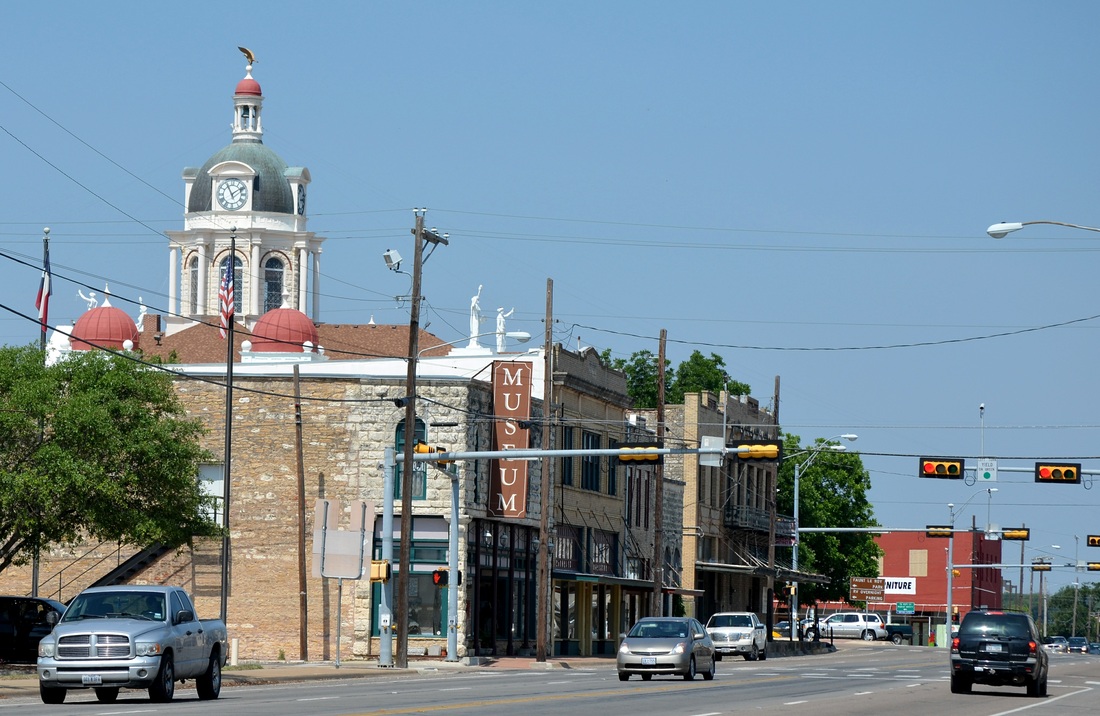
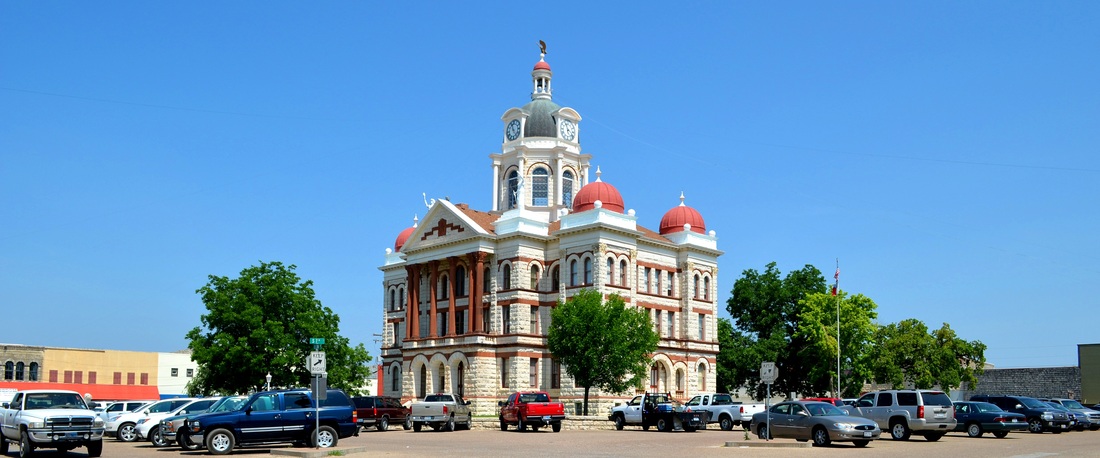
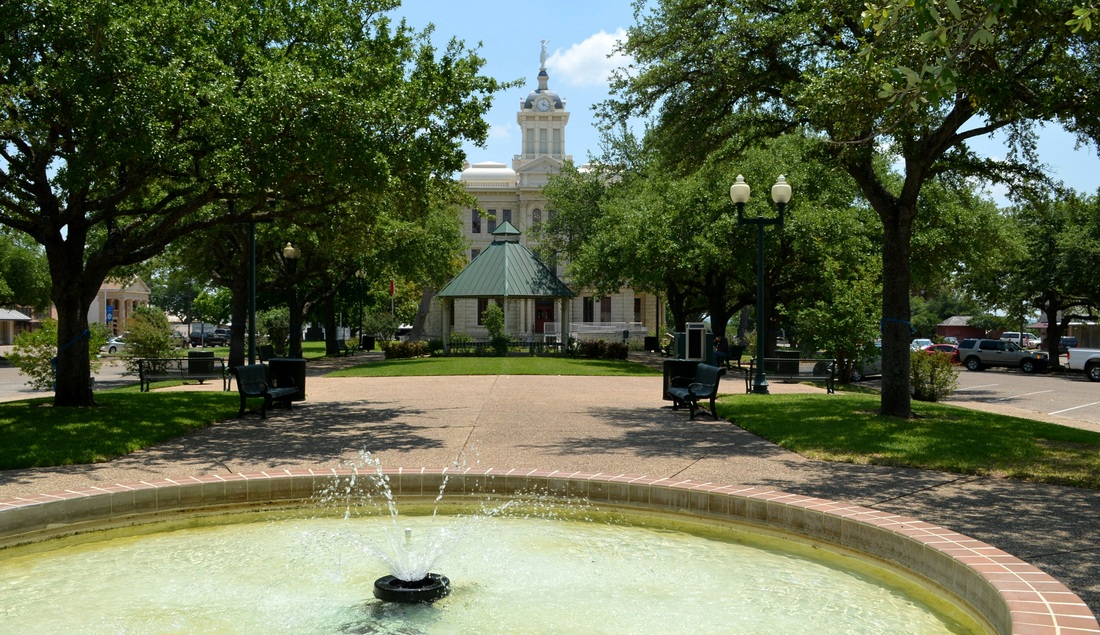
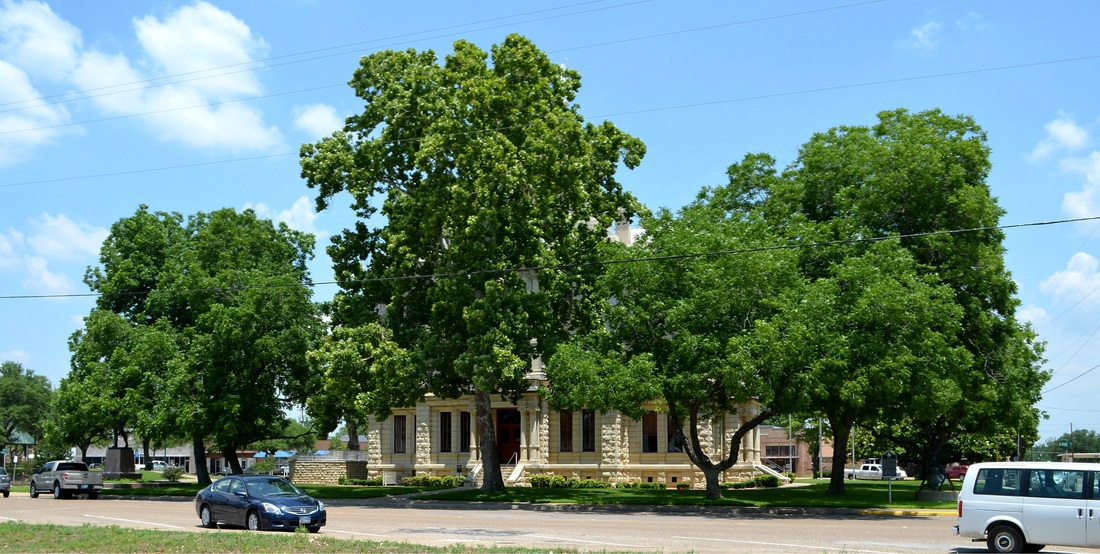
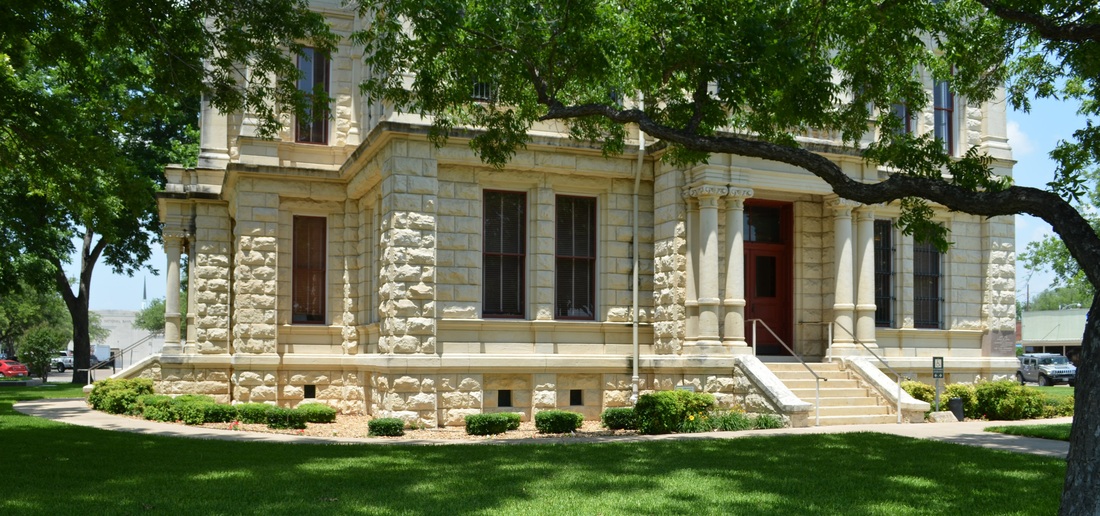
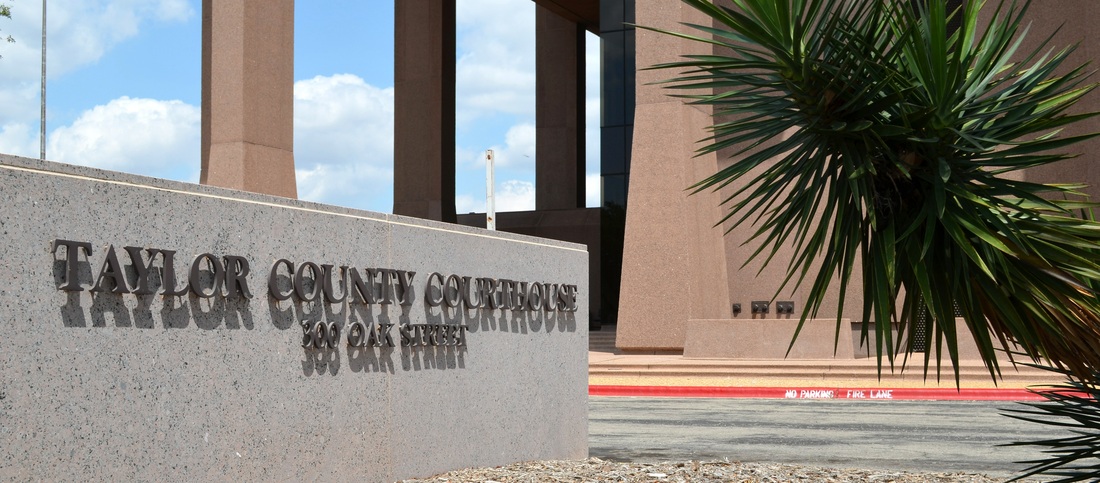
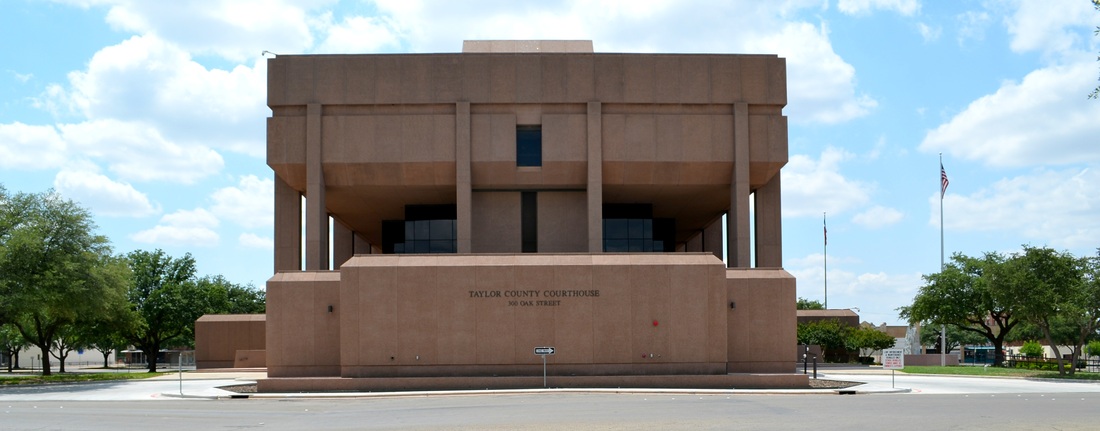
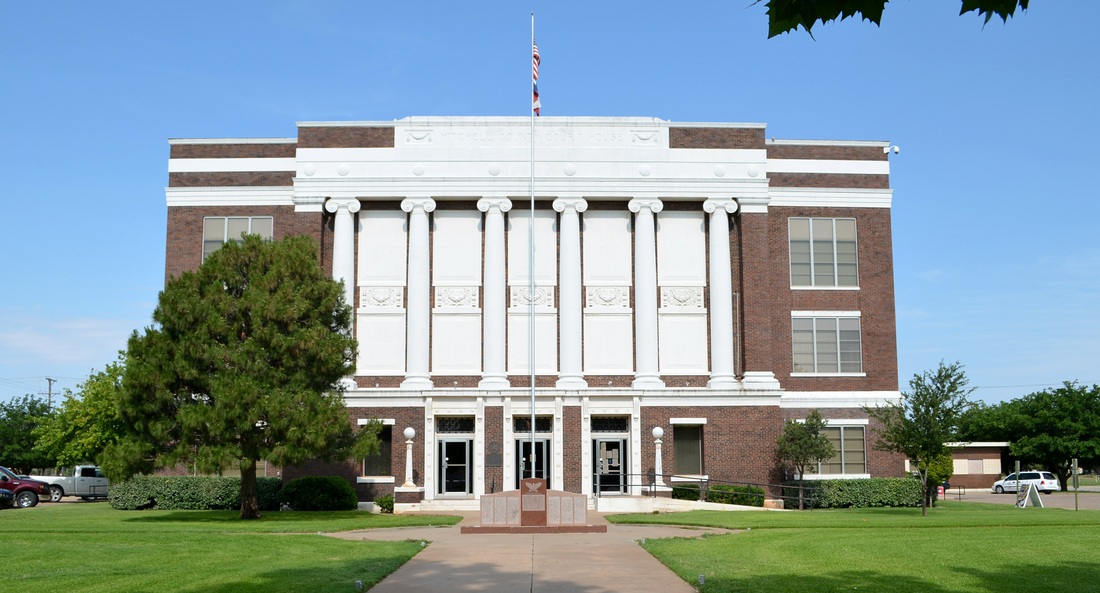
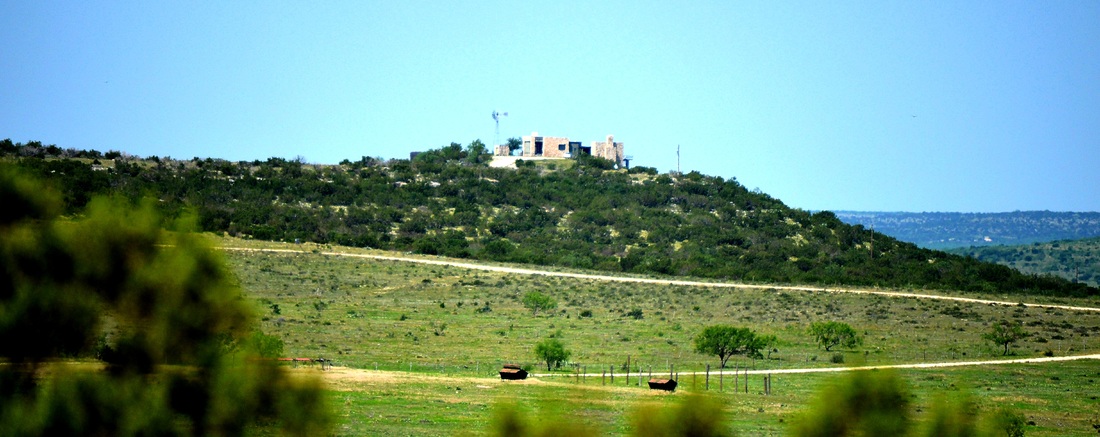
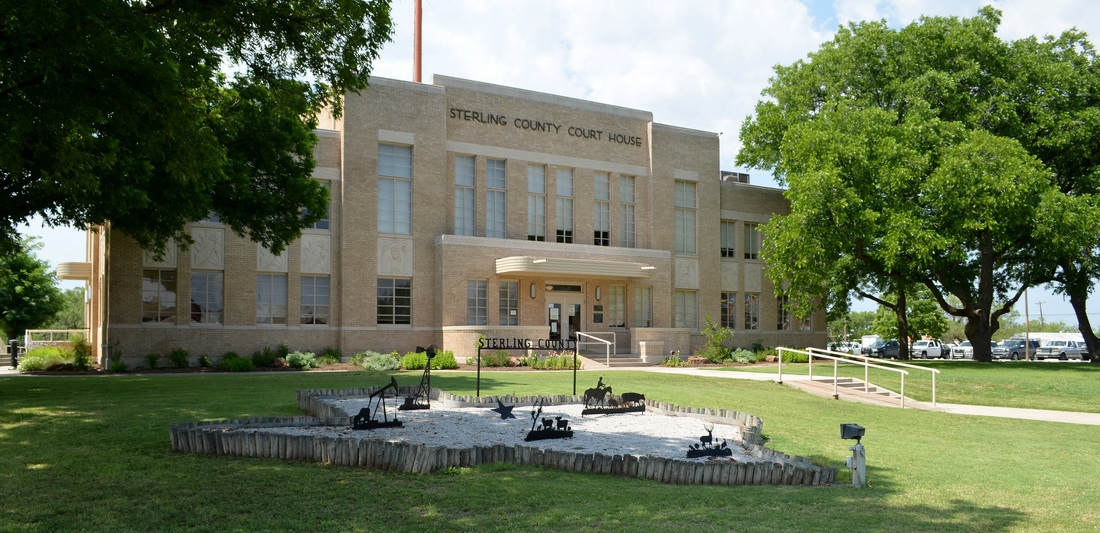
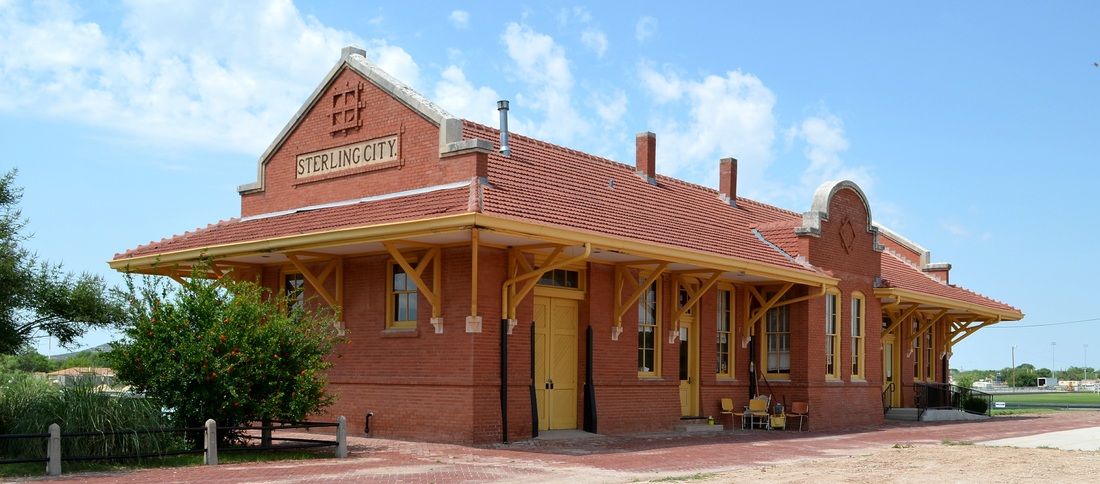
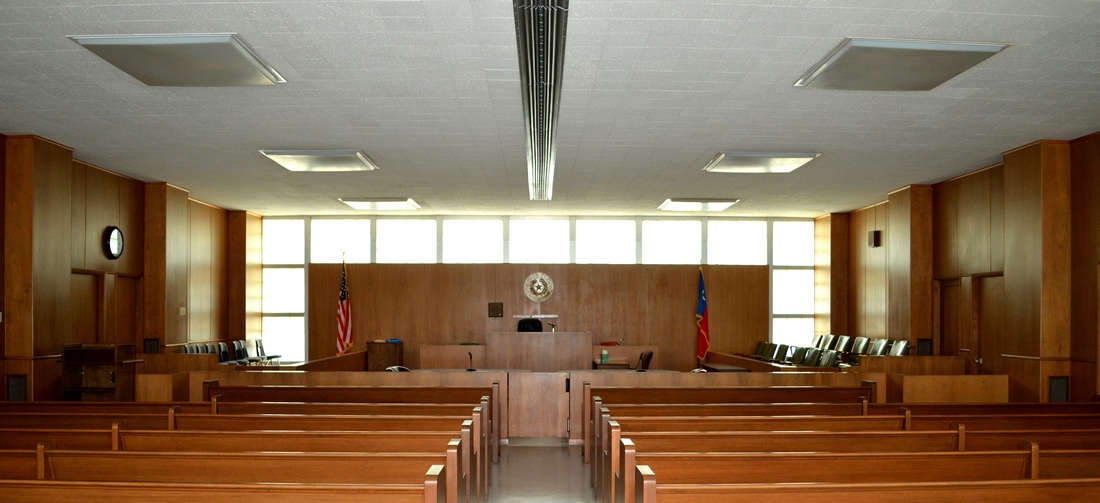
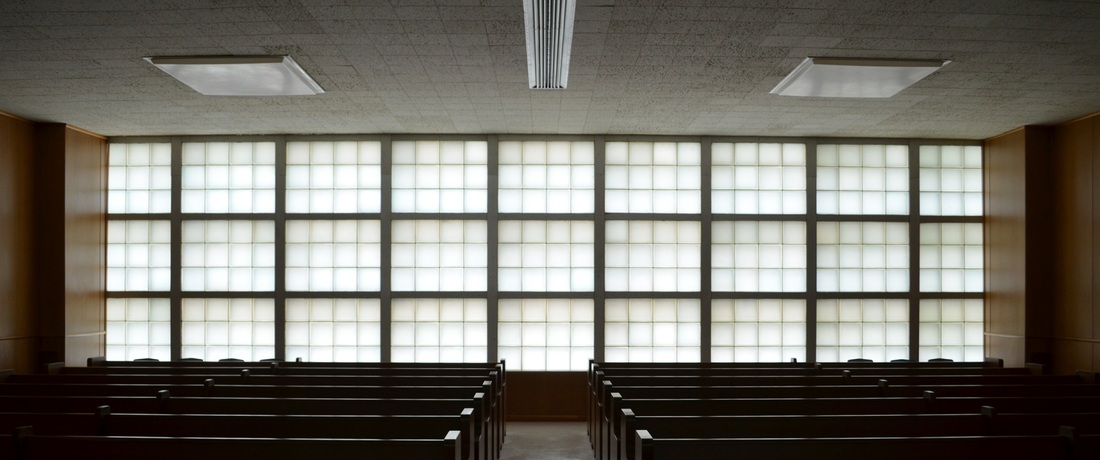
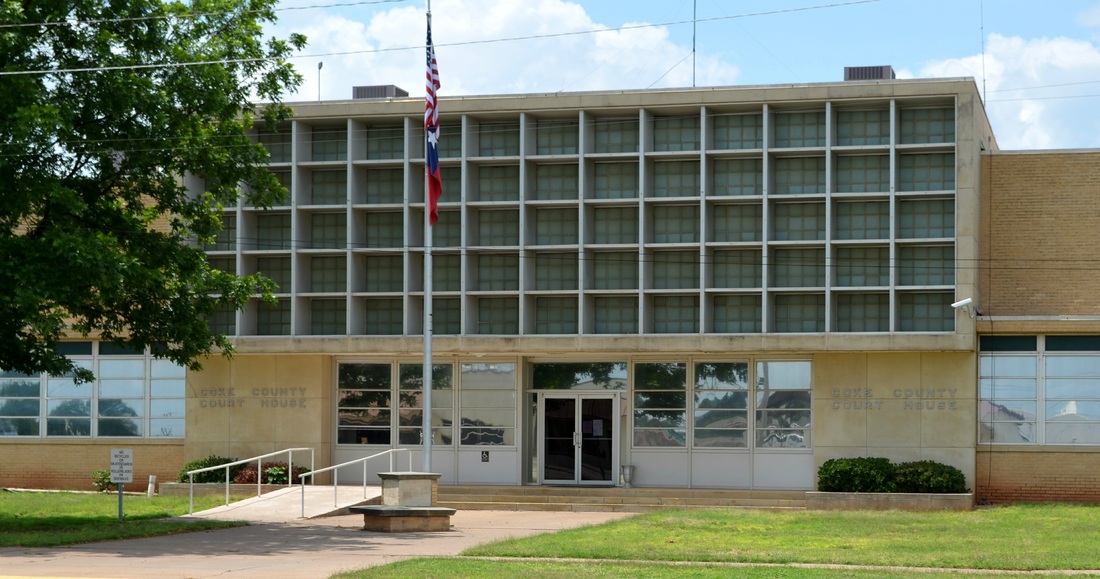
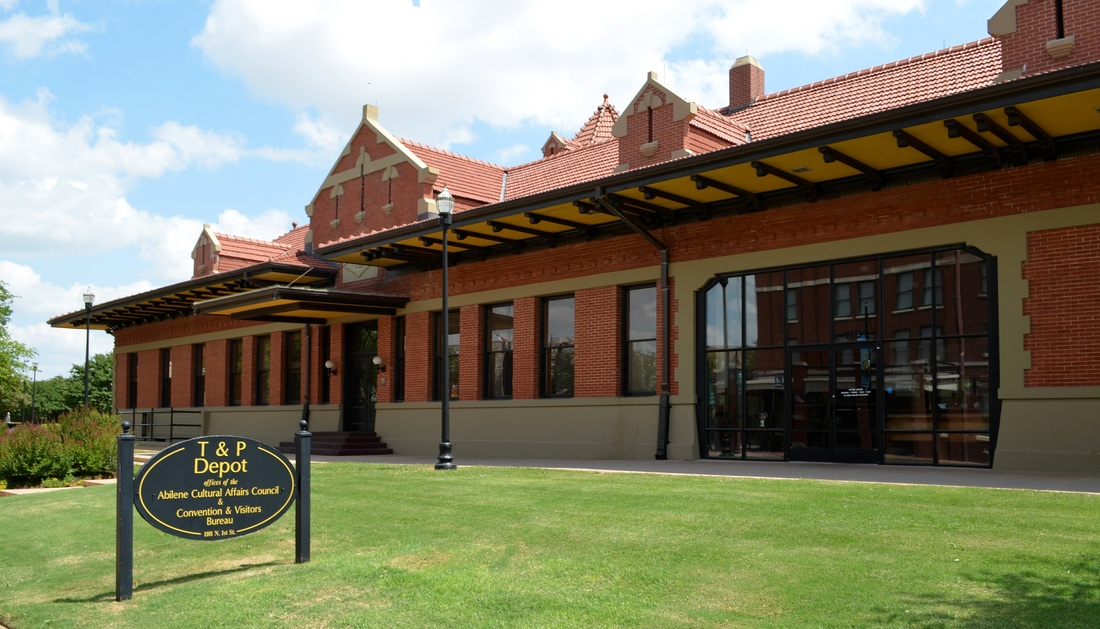
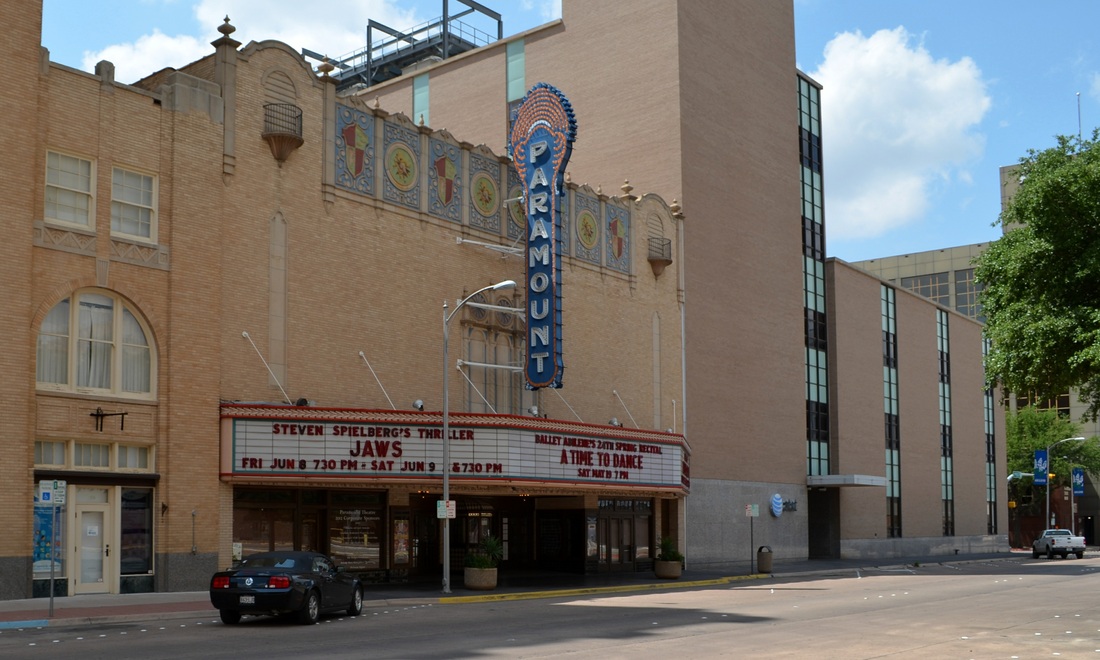
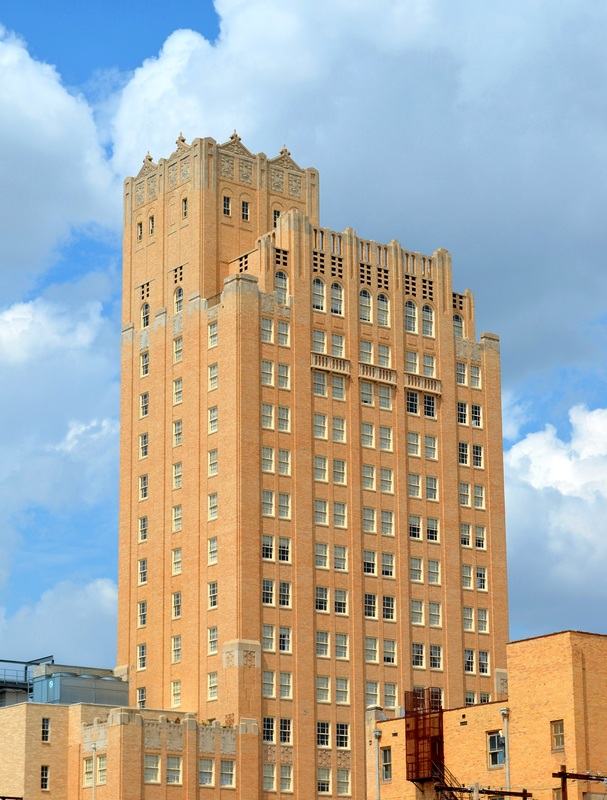
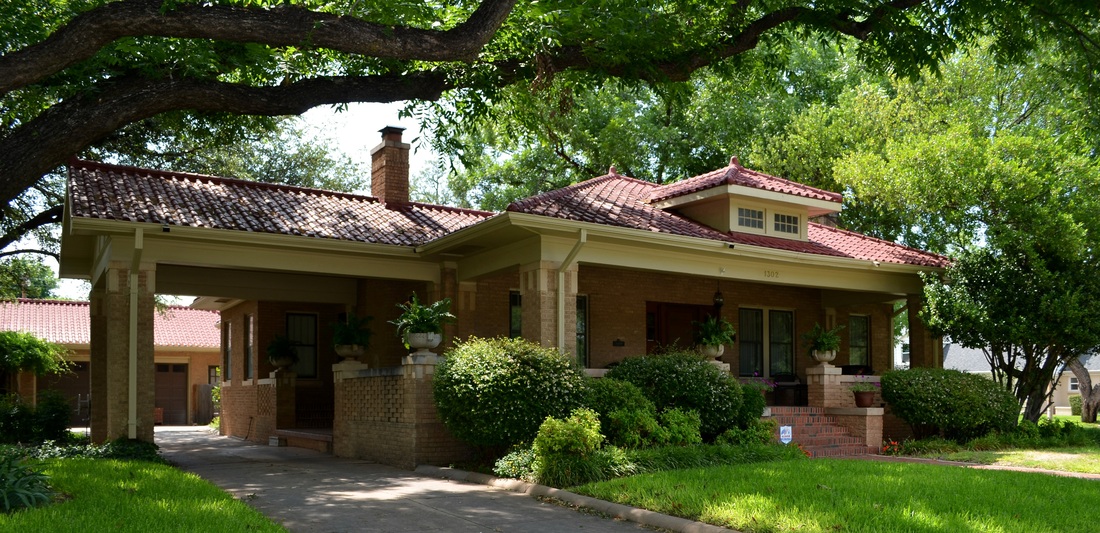
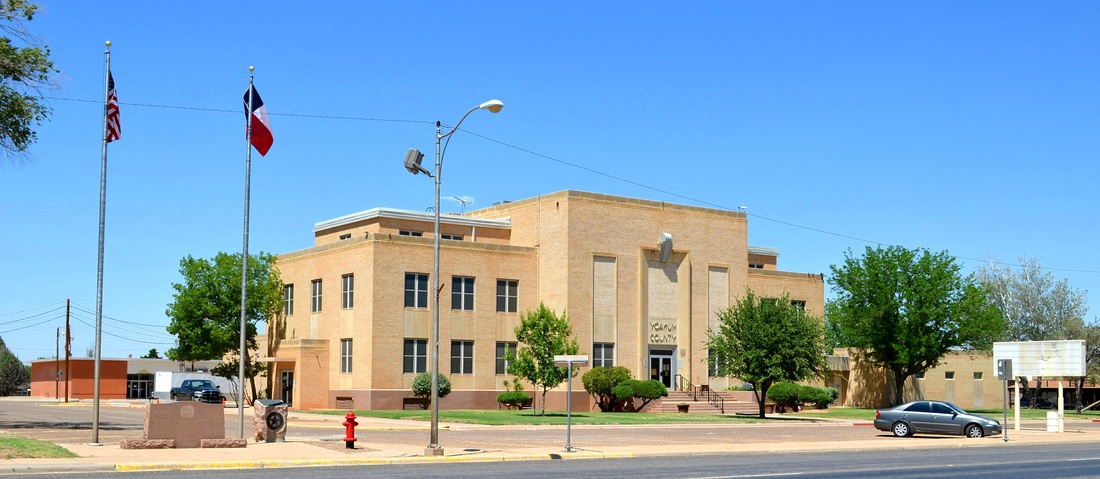
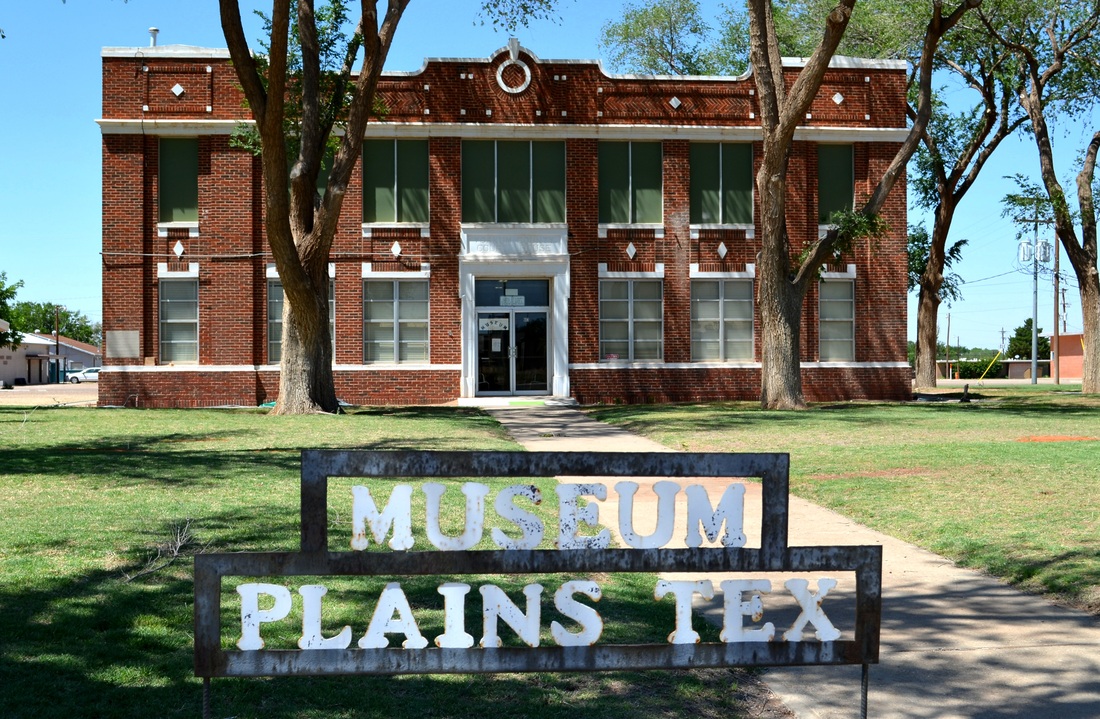

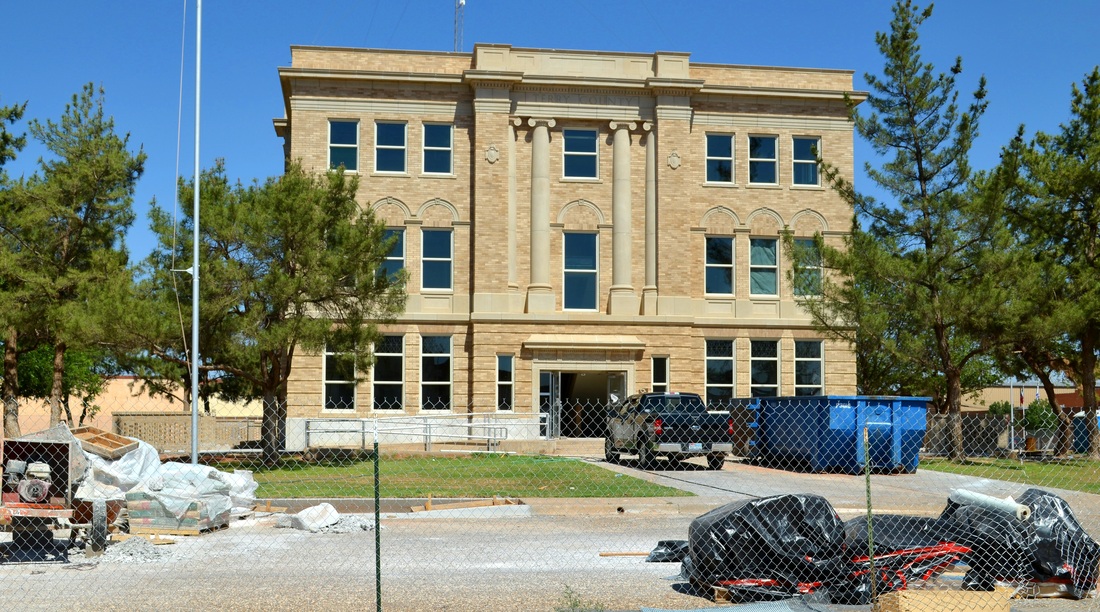
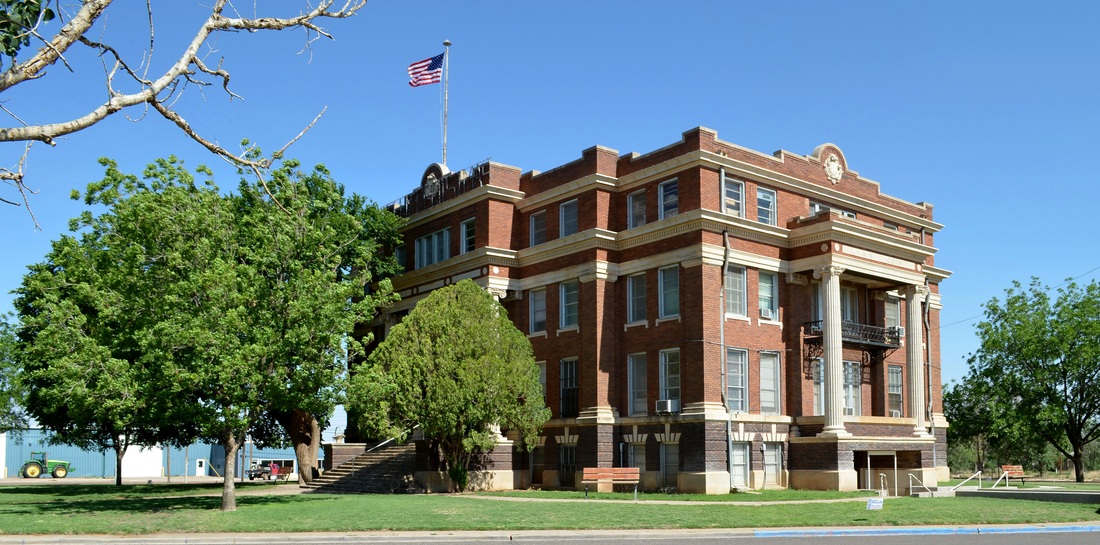
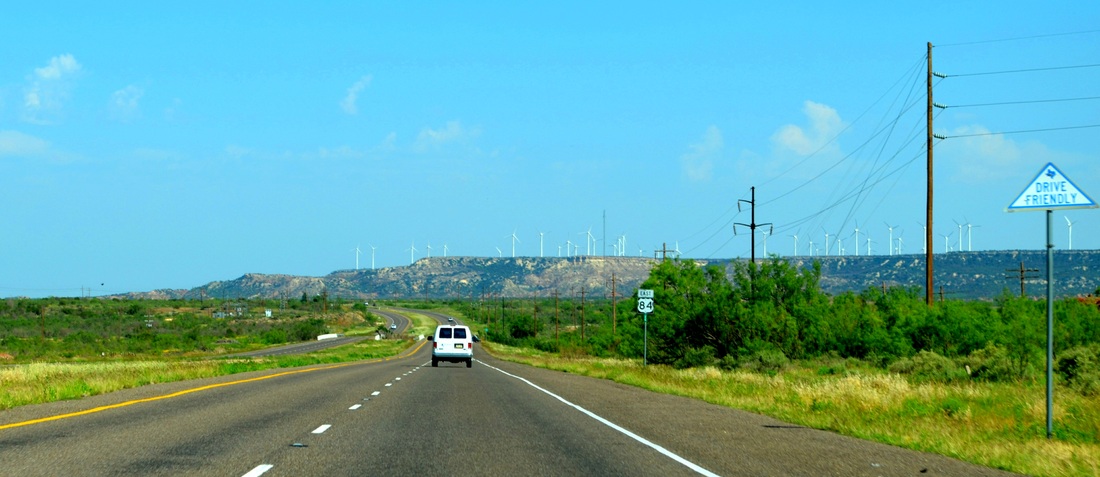
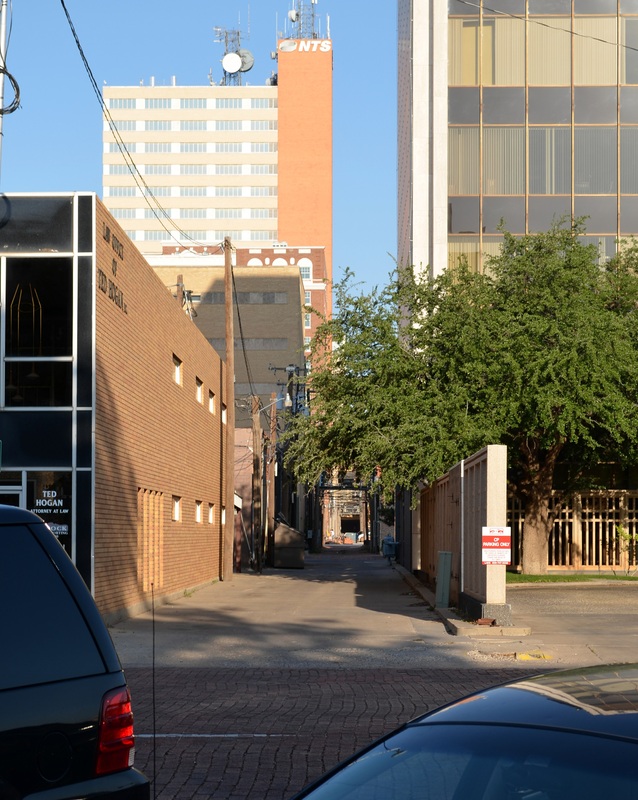
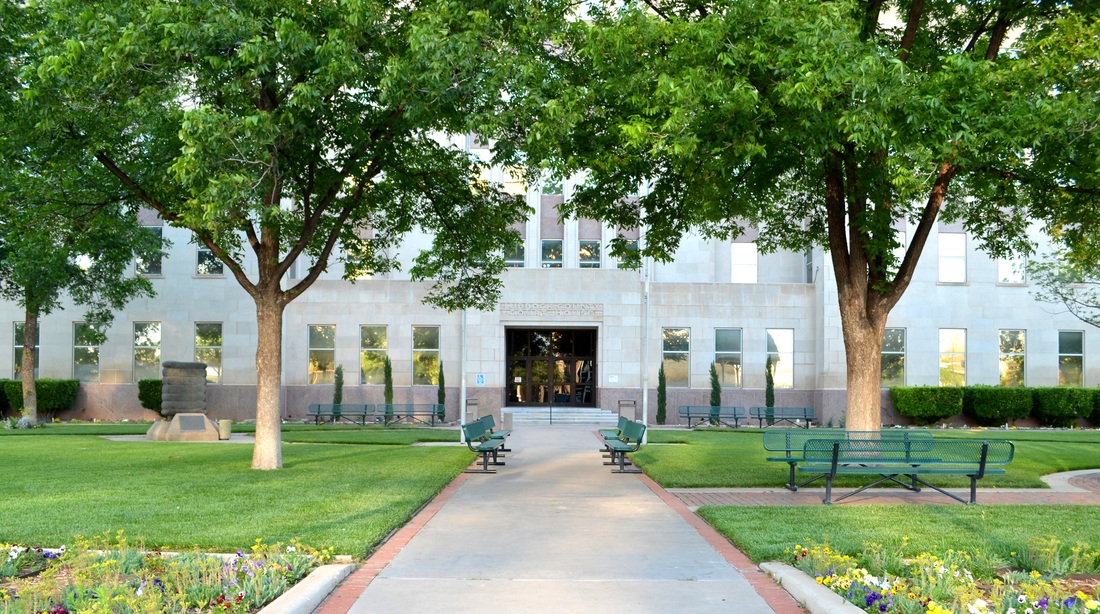

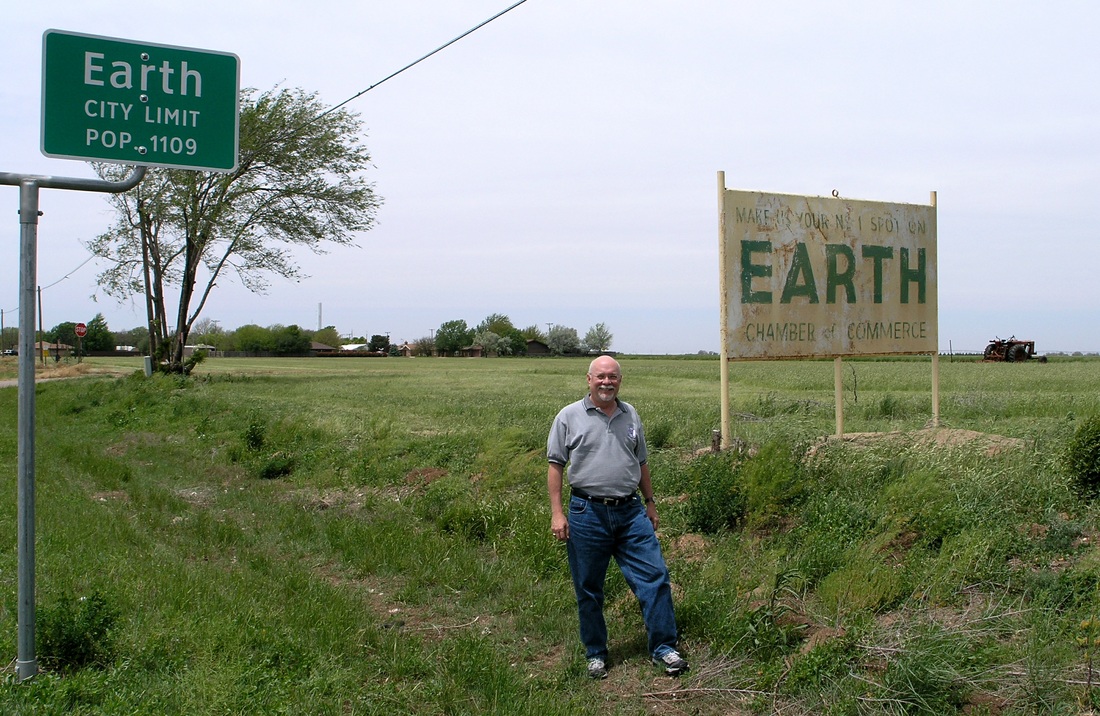
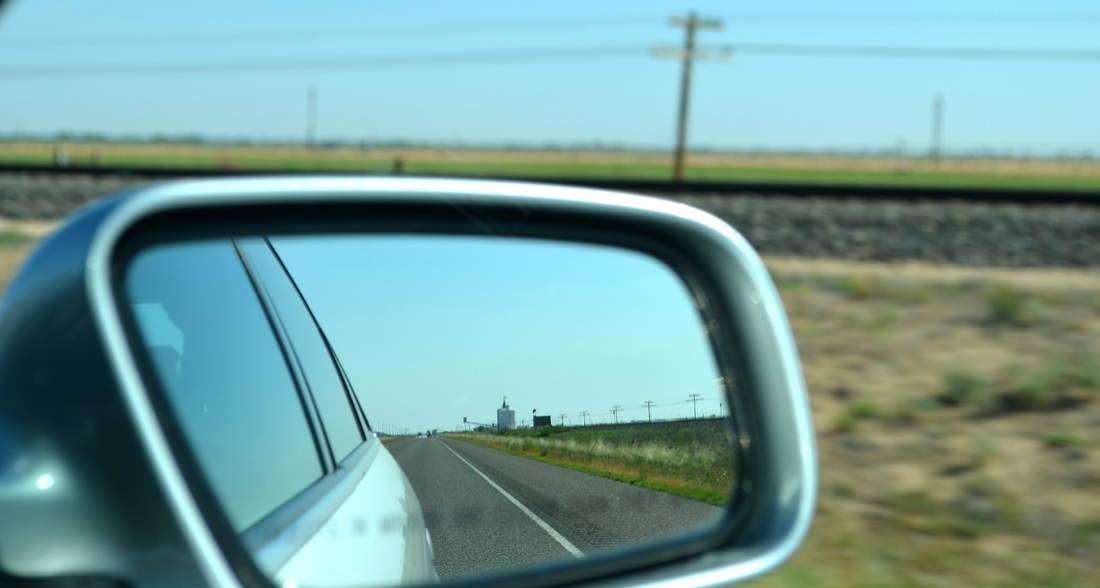
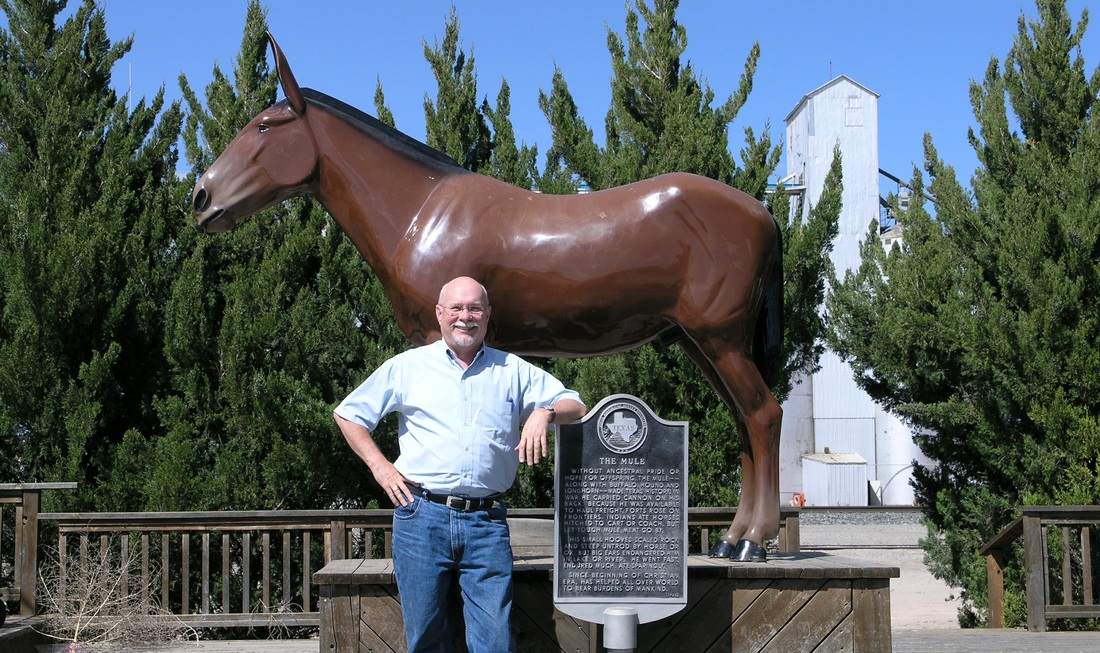
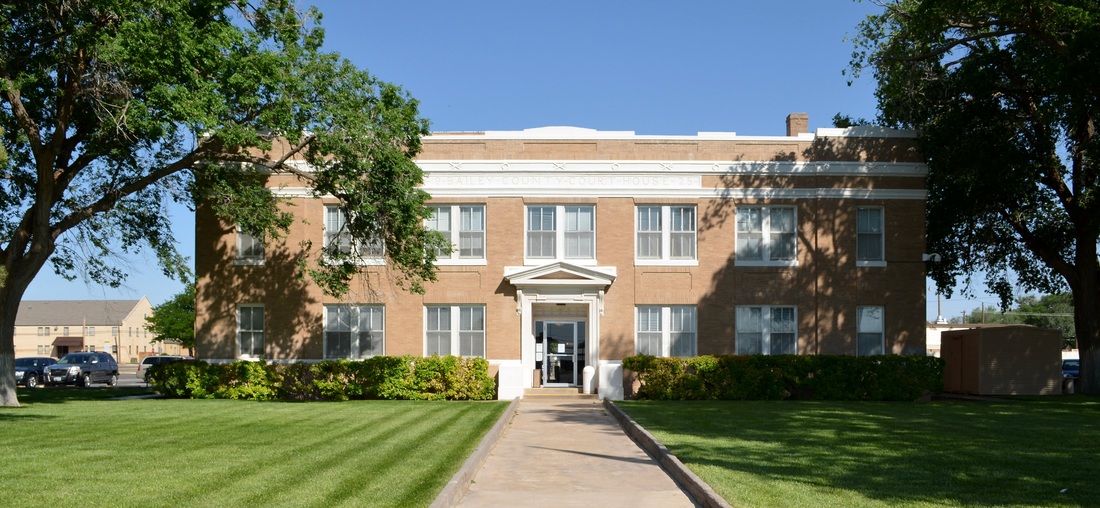
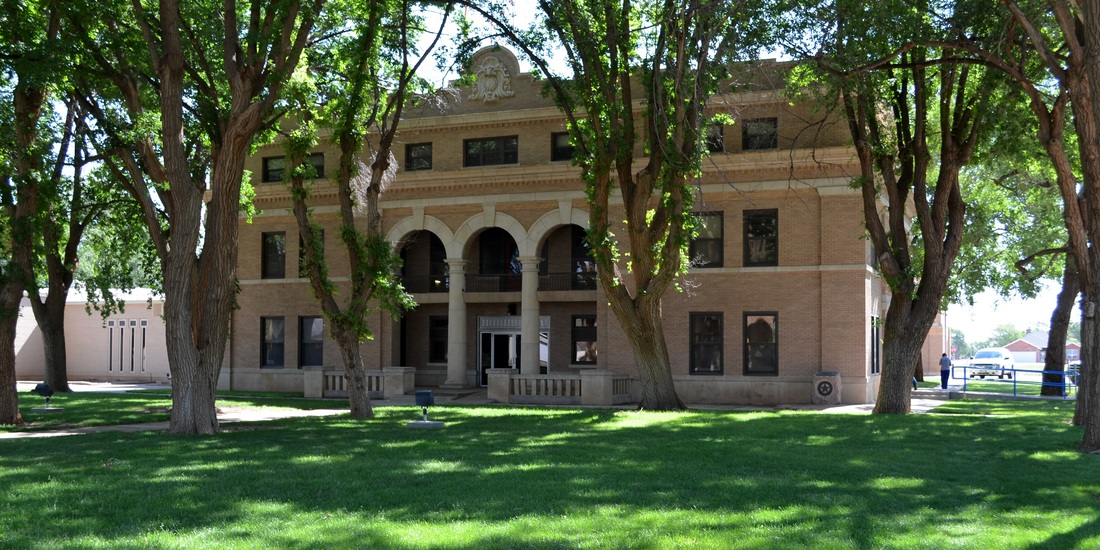
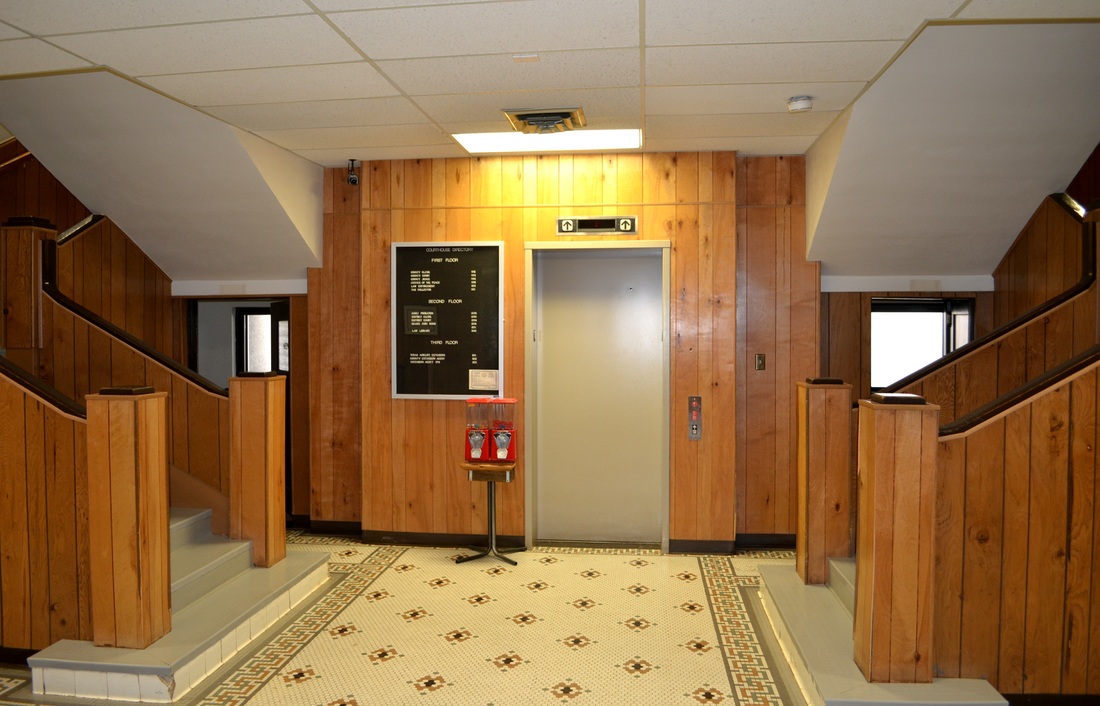
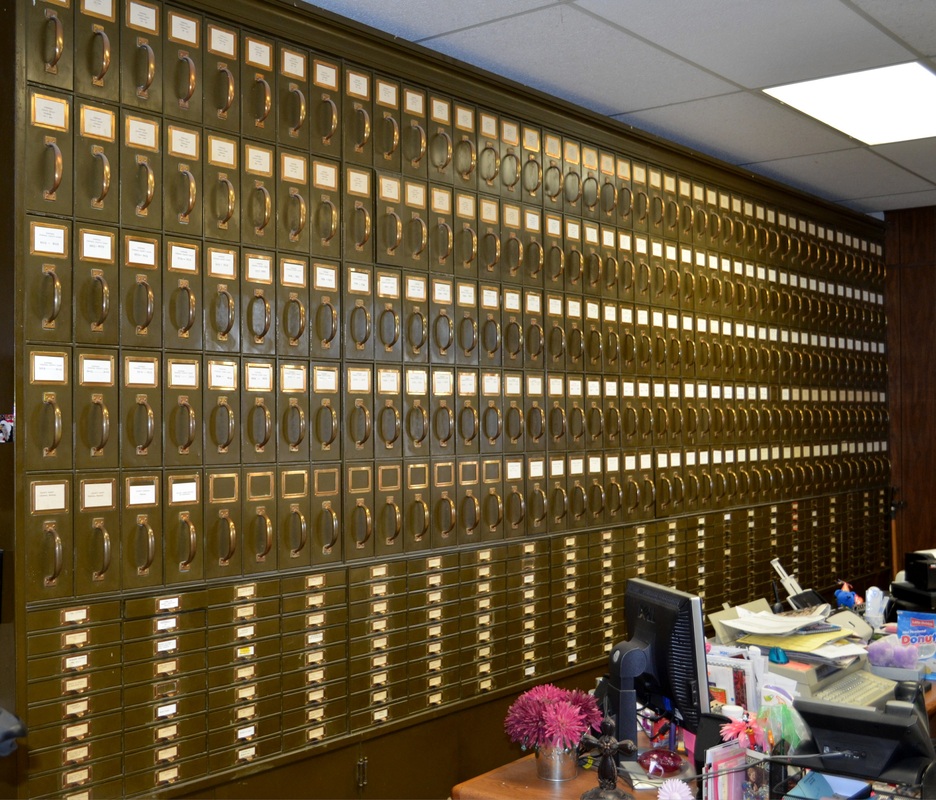

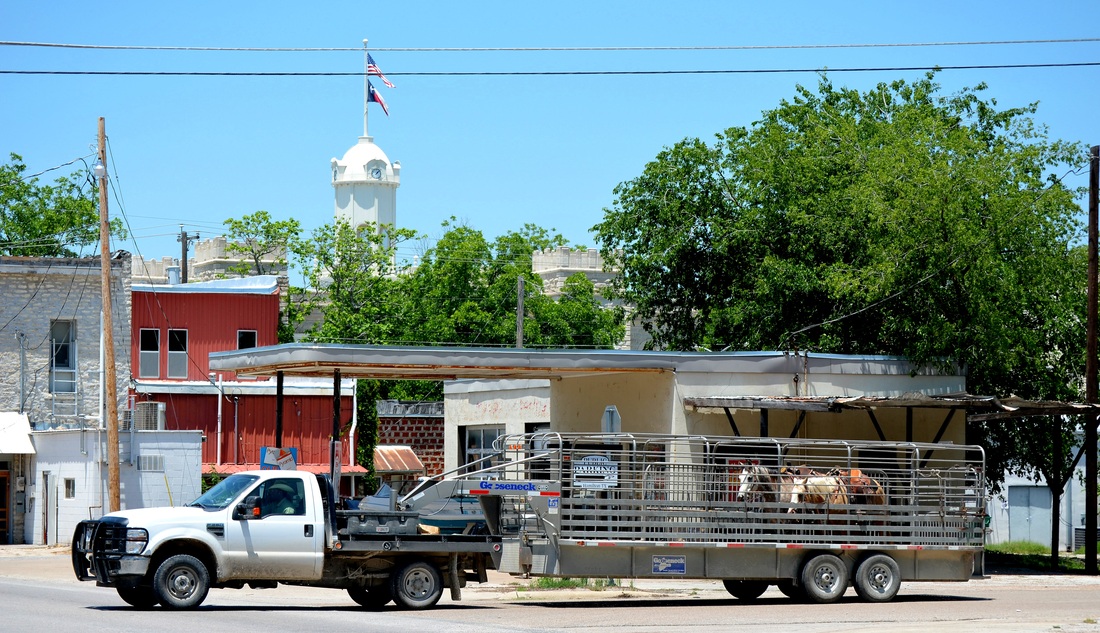
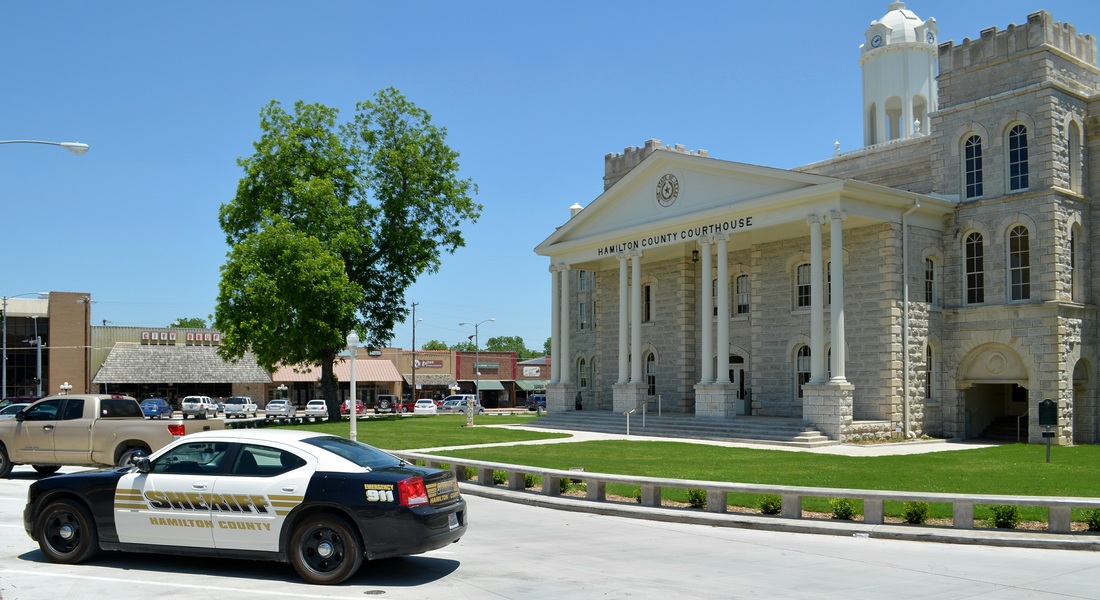
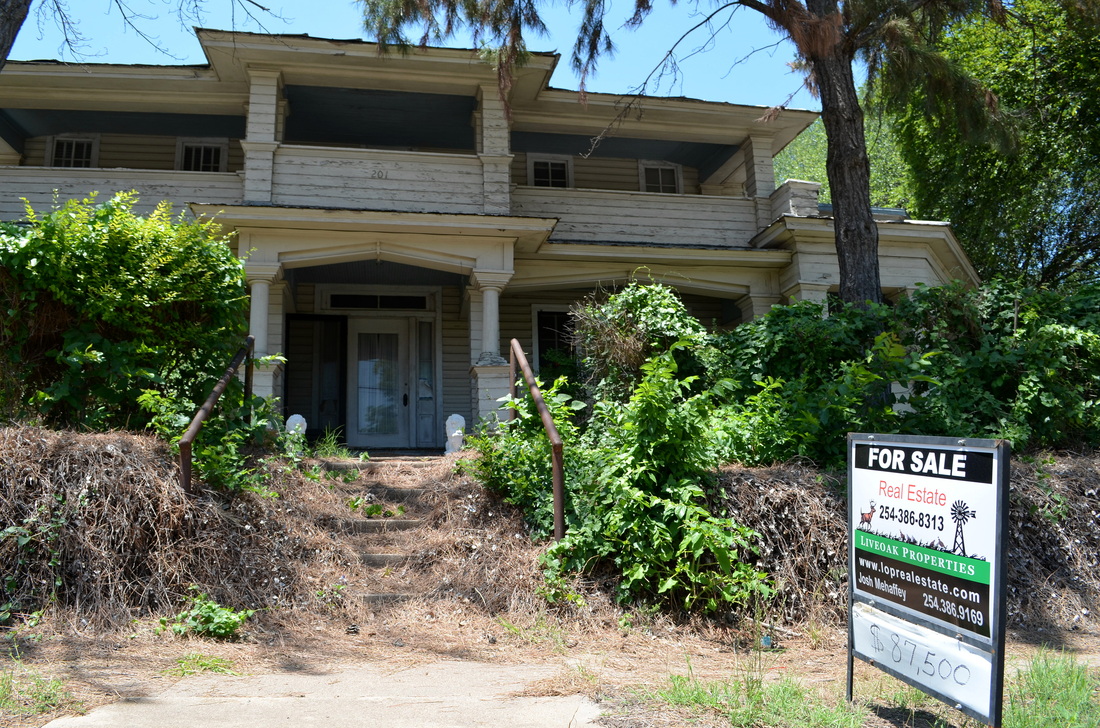
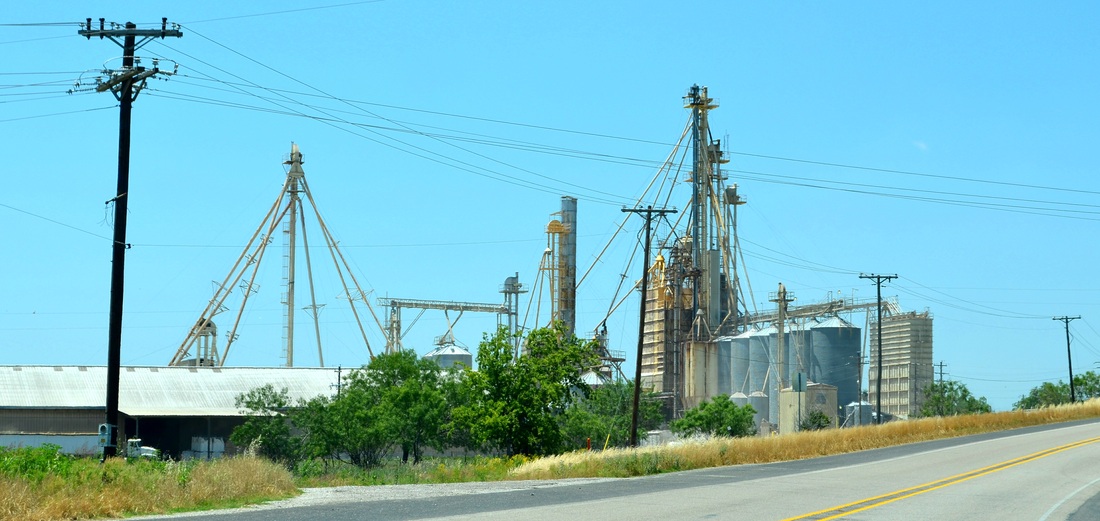
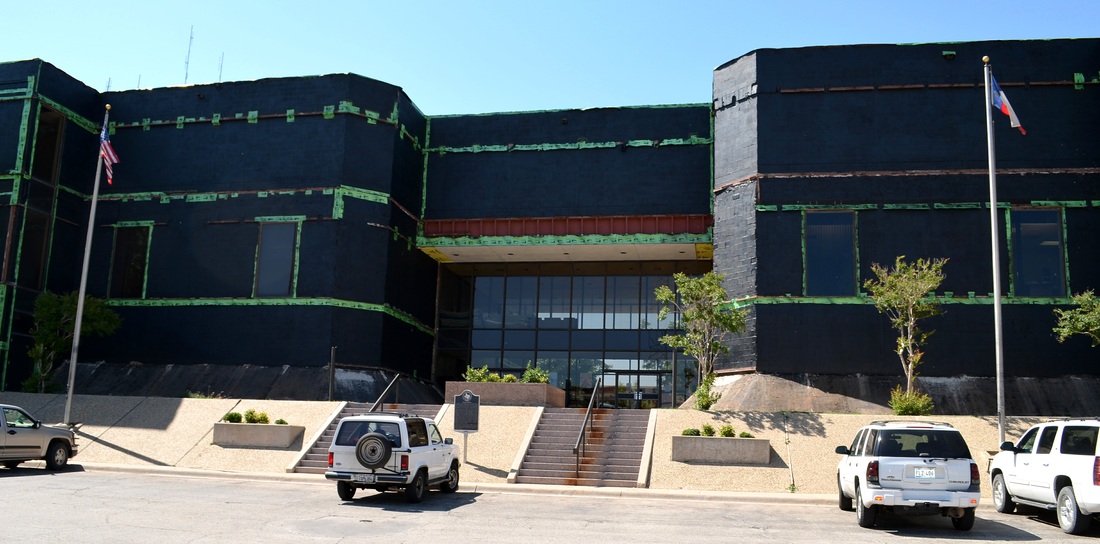
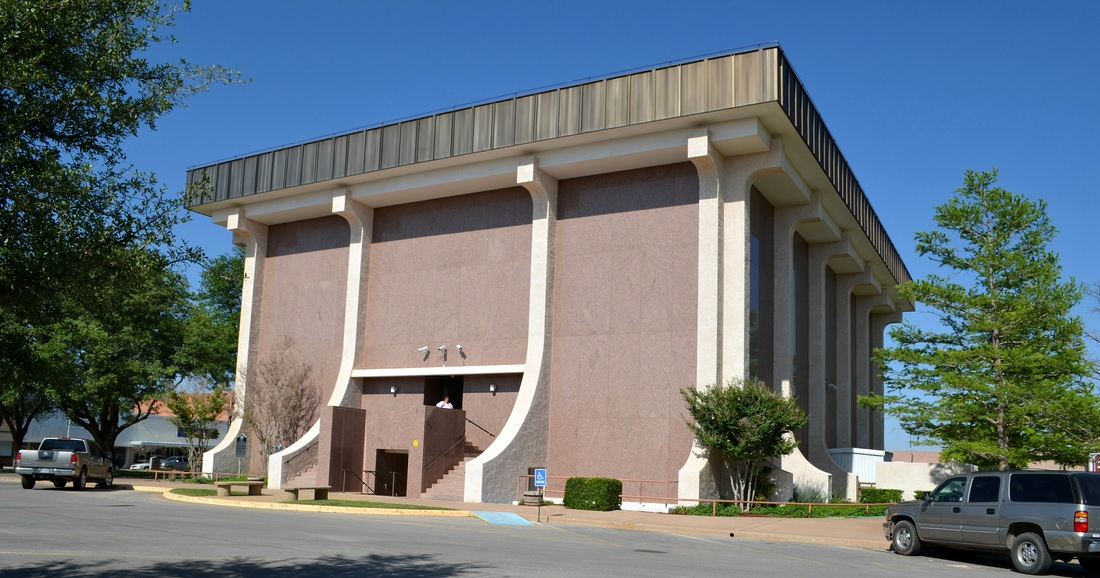
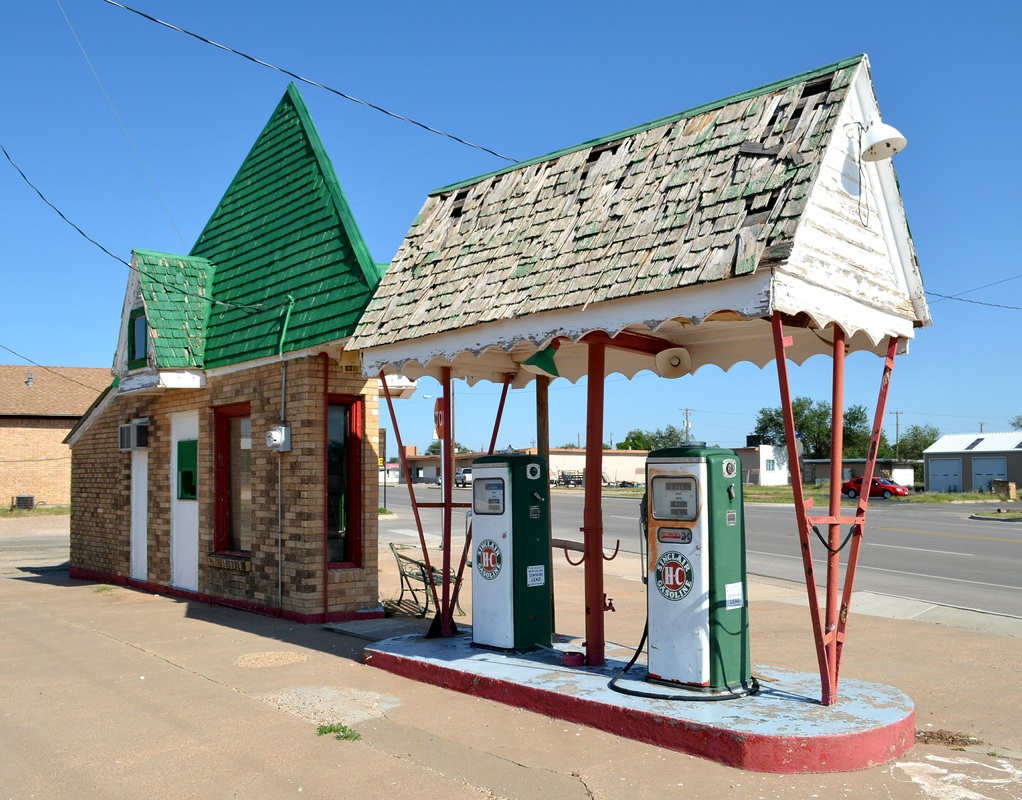
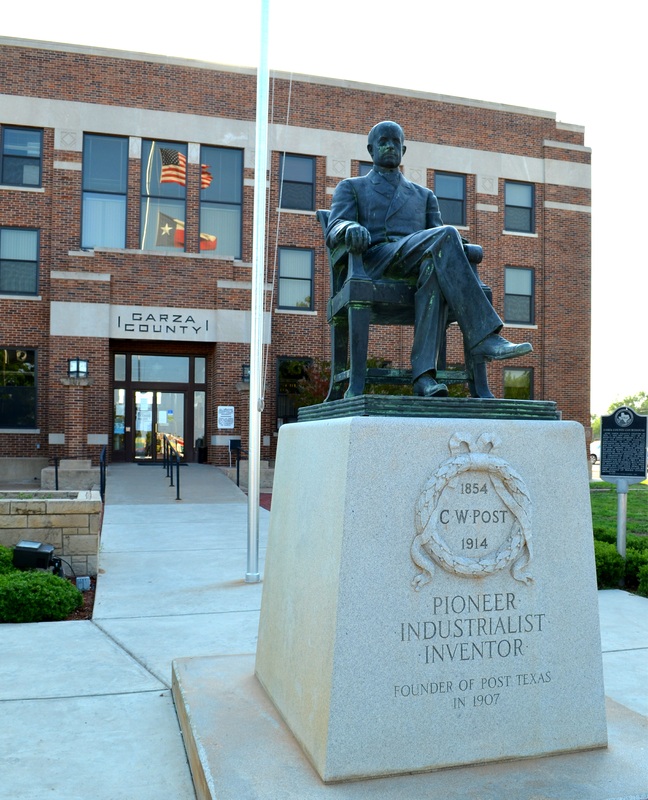
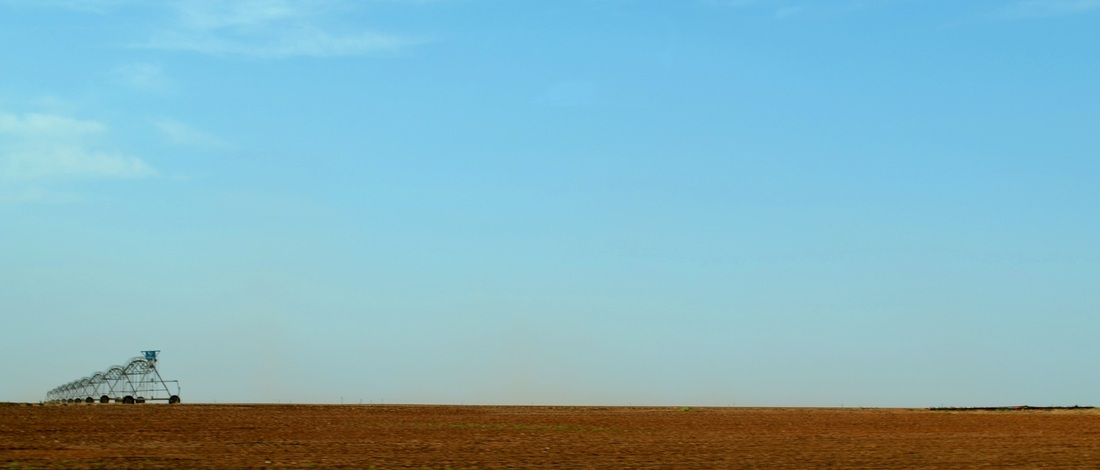
 RSS Feed
RSS Feed